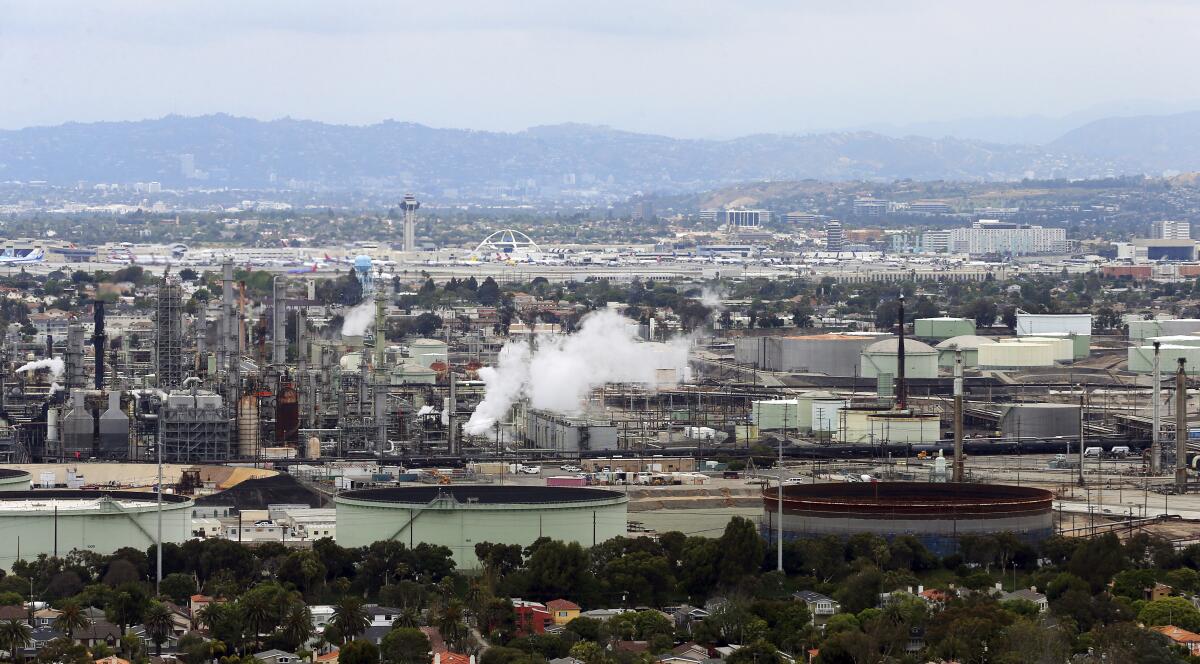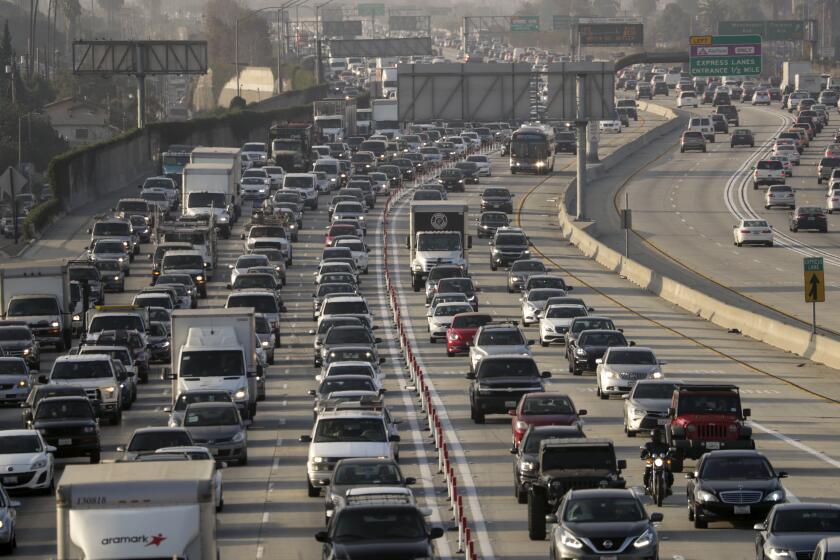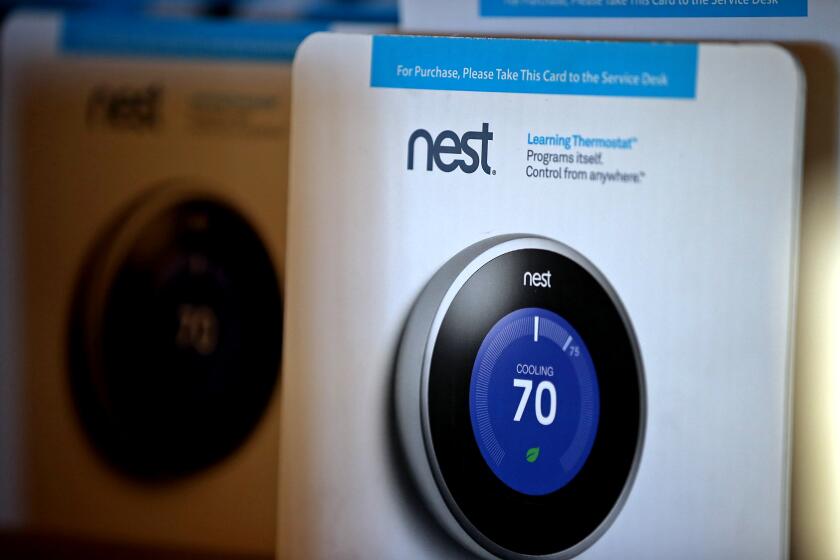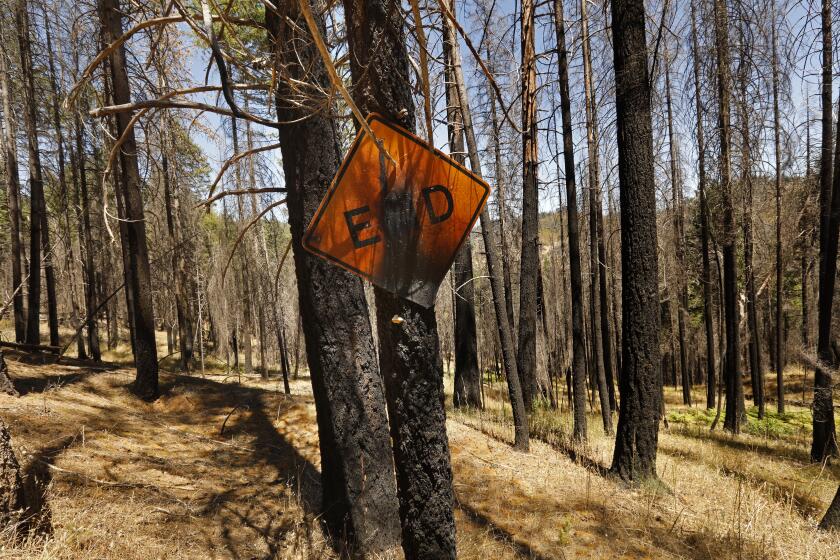California approves roadmap for carbon neutrality by 2045

- Share via
SACRAMENTO — California air regulators voted Thursday to approve an ambitious plan to drastically reduce reliance on fossil fuels by changing practices in the energy, transportation and agriculture sectors, but critics say it doesn’t go far enough to combat climate change.
The plan sets out to achieve so-called carbon neutrality by 2045, meaning the state will remove as many carbon emissions from the atmosphere as it emits. It aims to do so in part by reducing fossil fuel demand by 86% within that time frame.
California previously set that carbon neutrality target as a goal, but Gov. Gavin Newsom signed legislation making it a mandate this year. He has said drastic changes are needed to position California as a global climate leader.
Capturing large amounts of carbon and storing it underground is one of the most controversial elements of the proposal. Critics say it gives the state’s biggest emitters reason to not do enough on their part to mitigate climate change.
Carbon neutrality requires more than a plan backed by bold statements. California has more work to do.
At the beginning of Thursday’s meeting, California Air Resources Board Chair Liane Randolph touted the latest version of the plan as the most ambitious to date. It underwent changes after public comments earlier this year.
“Ultimately, achieving carbon neutrality requires deploying all tools available to us to reduce emissions and store carbon,” Randolph said.
The plan does not commit the state to taking any particular actions but sets out a broad roadmap for how California can achieve its goals. Here are the highlights:
Renewable Power
The implementation of the plan hinges on the state’s ability to transition away from fossil fuels and rely more on renewable resources for energy. It calls for the state to cut liquid petroleum fuel demand by 94% by 2045, and quadruple solar and wind capacity along that same timeframe.
Another goal would mean new residential and commercial buildings will be powered by electric appliances before the next decade.
The calls to dramatically lower reliance on oil and gas comes as public officials continue to grapple with how to avoid blackouts when record-breaking heat waves lead Californians to crank up their air conditioning.
Transportation
Officials hope a move away from gas-powered cars and trucks reduces greenhouse gas emissions while limiting the public health impact of chemicals these vehicles release.
In a July letter to the air board, Newsom requested that the agency approve aggressive cuts to emissions from planes, a move that would accompany other reductions in the transportation sector as the state transitions to all zero-emission vehicle sales by 2035.
If you’re buying something to improve the energy efficiency of your Southern California home, there’s likely to be a government rebate to cut the cost.
The plan’s targets include having 10% of aviation fuel demand come from electric or hydrogen sources by 2045 and ensuring all medium-duty vehicles sold are zero-emission by 2040. The board has already passed a policy to ban the sale of new cars powered solely by gasoline in the state starting in 2035.
Carbon Capture
The plan refers to carbon capture as a “necessary tool” to implement in the state alongside other strategies to mitigate climate change. It calls for the state to capture 100 million metric tons of carbon dioxide equivalent and store it underground by 2045.
Connie Cho, an attorney for environmental justice group Communities for a Better Environment, called the plan “a huge step forward” to mitigate climate change and protect public health.
Contributor: California’s carbon-offset forests aren’t trapping much carbon. Here’s how to do better
Satellite images since 1986 show that land set aside for protection is performing much like land that isn’t protected. Companies claiming offsets are skating by.
“Our communities have been suffering from chronic disease and dying at disproportionate rates for far too long because of the legacy of environmental racism in this country,” Cho said.
But Cho criticized its carbon capture targets, arguing they give a pathway for refineries to continue polluting as the state cuts emissions in other areas.
Agriculture
One of the goals is to achieve a 66% reduction in methane emissions from the agriculture sector by 2045. Cattle are a significant source for releasing methane, a potent, planet-warming gas.
The plan’s implementation would also mean less reliance by the agriculture sector on fossil fuels as an energy source.
More to Read
Sign up for Essential California
The most important California stories and recommendations in your inbox every morning.
You may occasionally receive promotional content from the Los Angeles Times.
















